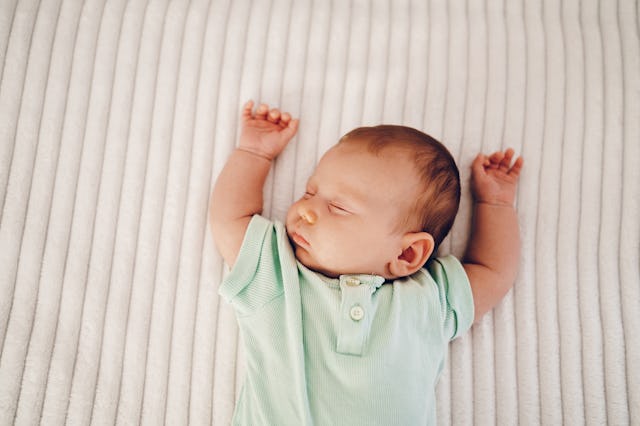Federal Government No Longer Participating In Safe to Sleep Campaign
The department that produced content for doctors and organizations has been eliminated.

The Trump administration has made the elimination of so-called “waste” and “fraud” a point of pride in the early days of the president’s second term. In addition to the 130,000 federal employees fired or bought out since January, the Center on Budget and Policy Priorities reports the administration has expressed a desire to more than double that number in months to come.
The Department of Health and Human Services (HHS), run by Robert Kennedy Jr., has been particularly hard-hit with cuts to Head Start, minority health initiatives, and Title X funding for family planning and women’s healthcare to name just a few.
And now, Stat News reports that as of April 1, the federal government will no longer participate in the Safe to Sleep campaign, a decades-long program that drastically reduced instances of babies dying in their sleep. The Office of Communications for the Eunice Kennedy Shriver National Institute of Child Health and Human Development, which ran Safe to Sleep, has been closed and its employees have been placed on administrative leave.
In 1992, the American Academy of Pediatrics (AAP) began encouraging parents to put their baby on their backs rather than on their bellies (which had been the prevailing recommendation previously) to go to sleep. This was based on an international body of research that found babies sleeping in a supine rather than prone position were less likely to die of Sudden Infant Death Syndrome (SIDS). In 1994, the National Institute of Child Health and Human Development (NICHD) launched the Back to Sleep to spread the word. In 2012, the campaign changed its name to Safe to Sleep and expanded to educate the public about other sleep-related risks among infants.
The campaign has been an unqualified public health victory: since its launch, SIDS deaths in the United States have decreased more than 50%. Now, continuing to spread the word to new parents will be made harder as the communications office at the NICHD, which ran Safe to Sleep within the agency, was eliminated last month.
Prior to April 1, the agency worked with assorted doctors, non-profits, individuals, and other organizations to produce and distribute materials about safe sleep practices, including pamphlets for doctors offices and social media posts.
“We were the coordinators,” Christina Stile, an erstwhile deputy director of the department, told Stat News. “We produced all of these materials [for participating organizations], tons and tons of content for other groups to use, that’s going to be all gone. There’s no way that any of the organizations that we collaborated with can fill that role.”
Fortunately, as of press time, materials are still available on the Safe to Sleep website. But moving forward, nonprofits, which often operate with shoestring budgets, will not have the funds to produce these materials to scale on their own.
The move comes at a particularly bad time, research published by JAMA Pediatrics earlier this year has found that between 2020 and 2022 (the latest year for which we have government data), sudden unexpected infant death (SUID) rose 12%. Fortunately, numbers are still lower than prior to the Safe to Sleep campaign, but experts fear that some of these deaths — particularly those related to unsafe sleep practices — are preventable.
Information about safe sleep practices is still available at SafeToSleep.nichd.nih.gov, which promotes guidelines from the AAP. Infants should be placed on their backs for sleep in their own sleep space with no other people. Cribs, bassinets, or portable play pens should have a firm surface and a fitted sheet. Blankets, pillows, stuffed toys, and crib bumpers should not be in a child’s sleep space. Babies should not sleep on couches, armchairs, car seats (except when riding in a car) or in baby swings.